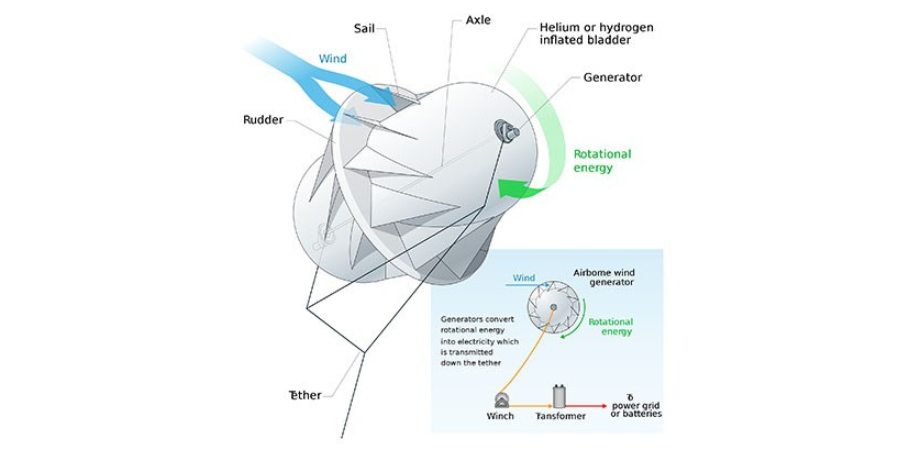Despite the rigors of scientific inquiry and the methodical approaches of the world’s most talented researchers, sometimes science has a surprise in store. Such was the case when a group of researchers from the U.S. Department of Energy’s (DOE’s) Argonne National Laboratory and the University of Akron discovered that a particular form of carbon coating not necessarily designed for wind turbines may indeed prove a boon to the wind industry — a serendipitous finding that was recently highlighted in the journal Tribology International
Due to the strenuous environment inherent in wind turbine drivetrains, key components such as actuators, bearings and gears are prone to failure, meaning turbines require regular maintenance that helps drive up the price of wind energy. Prolonging the life of these components could greatly reduce the cost of wind power, the fastest growing source of energy in the world, thereby making it an even more attractive energy source.
These failures are often due to a phenomenon known as micropitting in which the repeated rolling and sliding cycles in the gears and bearings of turbines lead to cracks on the surface of drivetrain components. Further contact only exacerbates the cracking once it begins, chipping away at the metal and increasing the severity of the existing cracks until costly maintenance is necessary or, even worse, the drivetrain fails.
Enter Argonne’s Tribology and Thermal-Mechanics Section and its Surface and Lubrication Interaction, Discovery and Engineering (SLIDE) initiative, which investigates how lubricants and materials interact and develops novel lubrication and coating concepts that reduce friction, and therefore micropitting, prolonging component life across a range of energy technologies.
And sometimes they get a little lucky. Such was the case when SLIDE researchers applied this “diamond-like” (some of the carbon-to-carbon bonding in the coating is similar to that of diamonds) coating to wind turbine components, which was not the intended use.
“We felt that if it was working under other sliding conditions, it might work in wind turbine drivetrains as well,” said SLIDE’s Ali Erdemir, an Argonne Distinguished Fellow. “Initially, our expectations were low, as we thought the coating would wear out due to the high stresses inherent in wind turbines, but that didn’t happen.”
So far the coating, named N3FC, has proven its worth through more than 100 million testing cycles with no appreciable micropitting. Erdemir admits that they don’t know exactly how far it could go, as it has surpassed the time limit of SLIDE’s benchtop micropitting test rig. If the coating performs similarly under real-world conditions, it could mean huge savings in terms of maintenance and prevention of failure in wind turbines nationwide — to the tune of millions of dollars, said Erdemir.
But first, he added, they need to learn exactly why it works.
“We don’t yet understand the exact mechanism,” said Erdemir. “The general belief is that component wear life extension requires a much harder coating, as more hardness reduces wear. But in this case the coating has less hardness than the base steel, so conventional thought doesn’t apply.”
The team is now eager to work with companies and see how N3FC performs in the field. Until then, they will stay busy trying to discover the mechanism behind this surprising scientific development. “We would love to get to the bottom of this and design even better coatings,” said Erdemir.
The team is also testing the coating in sealing applications for compressors. As a low-friction surface coating, it may also prove beneficial in natural gas and hydrogen environments. “It appears to have multiple capabilities in terms of performance,” said Erdemir.
While much of the work was done in Argonne’s tribology laboratory, Raman spectroscopy (which uses monochromatic light, usually from a laser) was performed at the laboratory’s Center for Nanoscale Materials, a DOE Office of Science User Facility.
The research was funded by DOE’s Office of Energy Efficiency & Renewable Energy (Vehicles Technologies Office and Wind and Hydropower Technologies Office).
Team members include Argonne researchers Giovanni Ramirez, Osman Eryilmaz and Aaron Greco, as well as Gary Doll of the University of Akron and Harpal Singh of both Argonne and the University of Akron.
Argonne National Laboratory seeks solutions to pressing national problems in science and technology. The nation’s first national laboratory, Argonne conducts leading-edge basic and applied scientific research in virtually every scientific discipline. Argonne researchers work closely with researchers from hundreds of companies, universities, and federal, state and municipal agencies to help them solve their specific problems, advance America’s scientific leadership and prepare the nation for a better future. With employees from more than 60 nations, Argonne is managed by UChicago Argonne, LLC for the U.S. Department of Energy’s Office of Science.
![]() Source: Science Direct – Nuclear Engineering and Technology
Source: Science Direct – Nuclear Engineering and Technology








